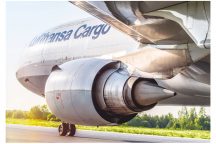The McDonnell Douglas MD-11 has a certain reputation of being difficult to fly. That is true to a certain extend, but it also follows the same principles of aerodynamics as every other aircraft. However, being a bigger and heavier version of its predecessor the DC-10 it is certainly at the edge of aerodynamics when being compared to other commercial planes in service today. It has a lot of power and is fun to fly at nearly all weights, but it’s landing behaviour is different to other aircraft.
Every MD-11 landings needs a lot of attention and very precise inputs. As is typical with freighter operation, conditions may vary widely – anything is possible from very low weights to maximum weights, from airports at sea level like Amsterdam to those high up in the mountains (e.g. Quito) and from very low temperatures (my worst was -45°C in Siberia) to very hot environments like in the deserts of Saudi Arabia. Every MD-11 pilot has to be aware of these conditions, as they have a big influence on the aircraft behaviour during landing and certain parameters like the height of the break need to be adjusted accordingly. To keep it short: you have to know what you are doing when flying the MD-11!
Posted in: Flying/MD-11/Lufthansa
